Foundation for a future quantum network – quantum channels tested in flight
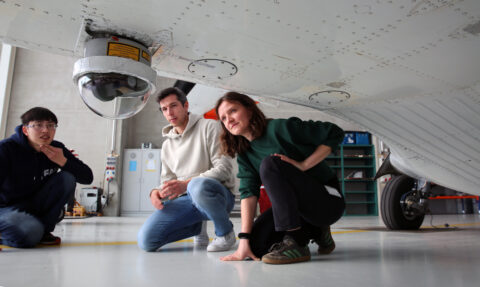
It is not easy to send individual photons from an aircraft in a targeted manner, capture them in a ground station, and also detect them. Researchers have now succeeded in doing exactly that: They even measured various quantum channels between an aircraft and a ground station several times, sent photons to an ion trap, and tested technologies for quantum key distribution. The flight experiment took place as part of the QuNET initiative, which develops technologies for quantum-secure communication. Photons, or particles of light, can be used to generate quantum cryptographic keys that make future communication practically tap-proof. The technologies are also groundbreaking for a future quantum Internet that connects quantum computers with each other.
Researchers from the German Aerospace Center (DLR), the Max Planck Institute for the Science of Light (MPL), Friedrich Alexander Universität Erlangen-Nürnberg (FAU), as well as the Fraunhofer Institutes for Applied Optics and Precision Engineering (IOF) and Heinrich Hertz Institute (HHI) participated in the experiment. The results have now been presented to the Federal Ministry of Research, Technology, and Space (BMFTR), which funds the QuNET initiative. Quantum key distribution is particularly important for communication between governments and authorities, but also in general for protecting infrastructure and data in everyday life in the future.
“We are working on practical solutions for satellite-based quantum communication, which can be used to transmit quantum states over long distances and generate secure keys. In fiber optics, this is only possible over distances of a few hundred kilometers. Quantum encryption via satellite, on the other hand, make it possible to cover much greater distances on Earth,” says Florian Moll from the DLR Institute of Communications and Navigation, explaining the future technology. To cover long distances, satellites, aircraft, or other mobile platforms are to become part of quantum networks in the future.
The current experiment was carried out using a DLR research aircraft from the Flight Experiments facility. The researchers installed an optical communication terminal in the Dornier 228. The aircraft formed a mobile node in a quantum network and established a connection to an optical receiving station on the ground. In this case, the ground station is a mobile container with an integrated receiving terminal, known as the QuBUS, provided by Fraunhofer IOF.
Highly complex technology
Individual photons are difficult to handle. For quantum communication, they must be generated with high quality and also be clearly detectable even under strong external interference. For the best possible results, the wavelength of the photons must also be precisely adjusted. “We have shown in various experiments that this is possible. The approach we tested can be used not only from aircraft, but also from satellites,” adds Florian Moll.
For the current experiment, several research flights took place over Erlangen, since the ion trap is set up in the laboratory at MPL. The particles of light from the aircraft were transmitted to the ground station using a glass fiber cable and forwarded to the measuring devices of the various experimental setups. The states of the “flying” particles were successfully verified in measurements at the MPL ion trap – which was one of the aims of the experiment. This communication technology can also be used, for example, to connect quantum memories or quantum computers in a future quantum network.
Secure communication for the future
Systems for conducting experiments for quantum key distribution were connected both in the aircraft and in the ground station. These systems are pioneering for satellite-based quantum communication. The researchers tested a system for clockless quantum key distribution and detected photons from an entanglement source on the ground. Channel measurements and component tests for QKD systems with new protocols and those with flexible configurations also supplied important findings for further developing secure communication for the future.

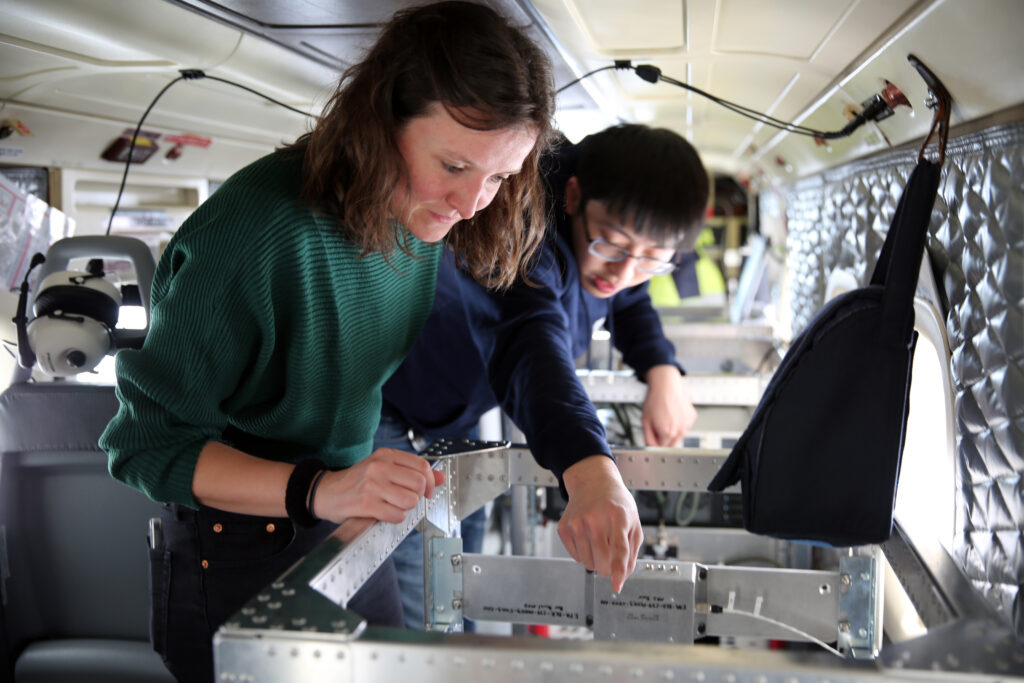
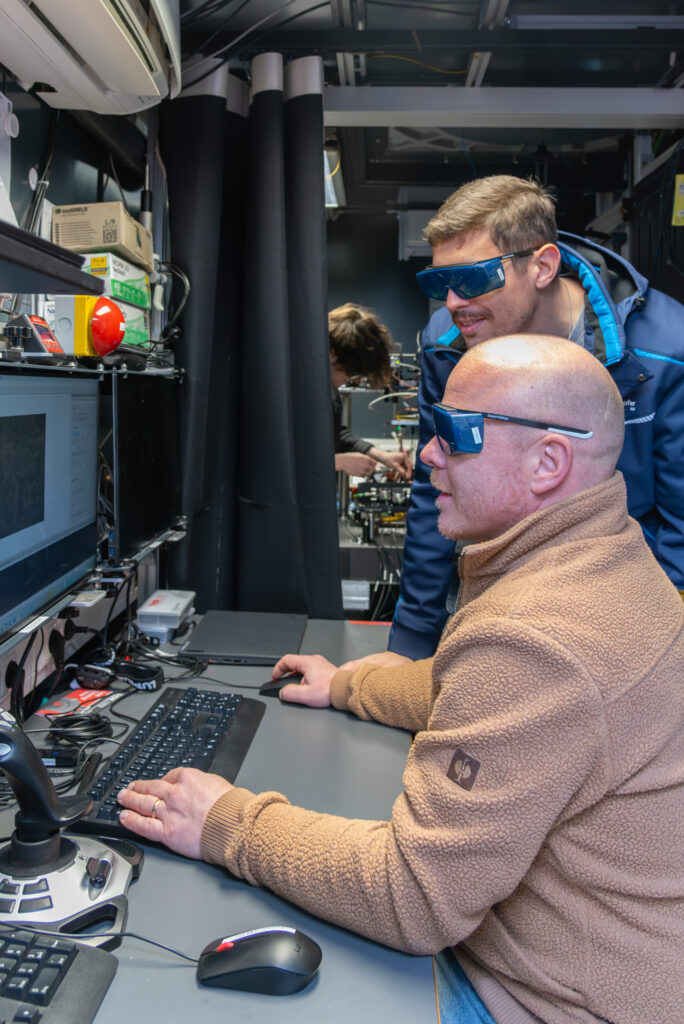
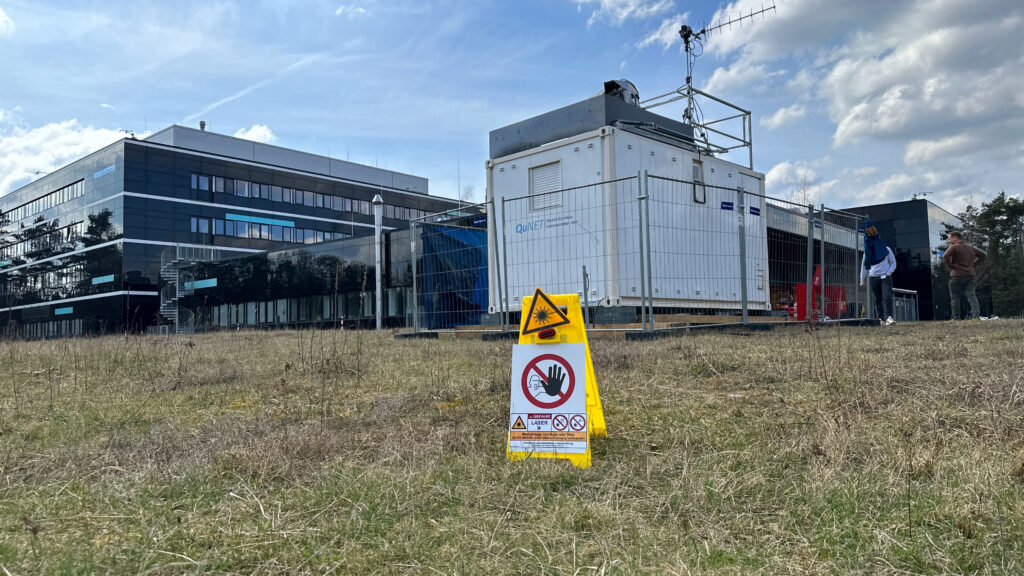
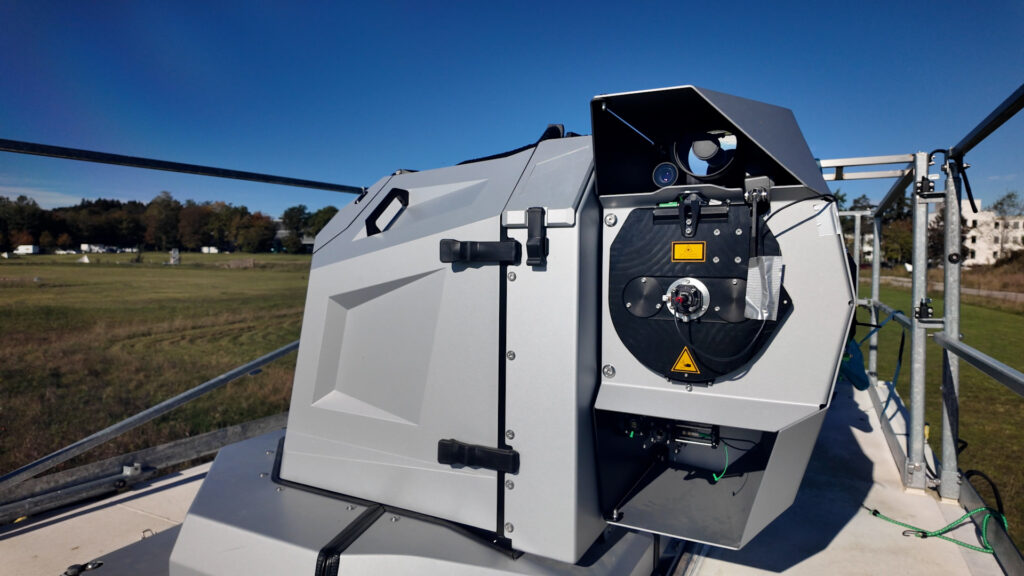
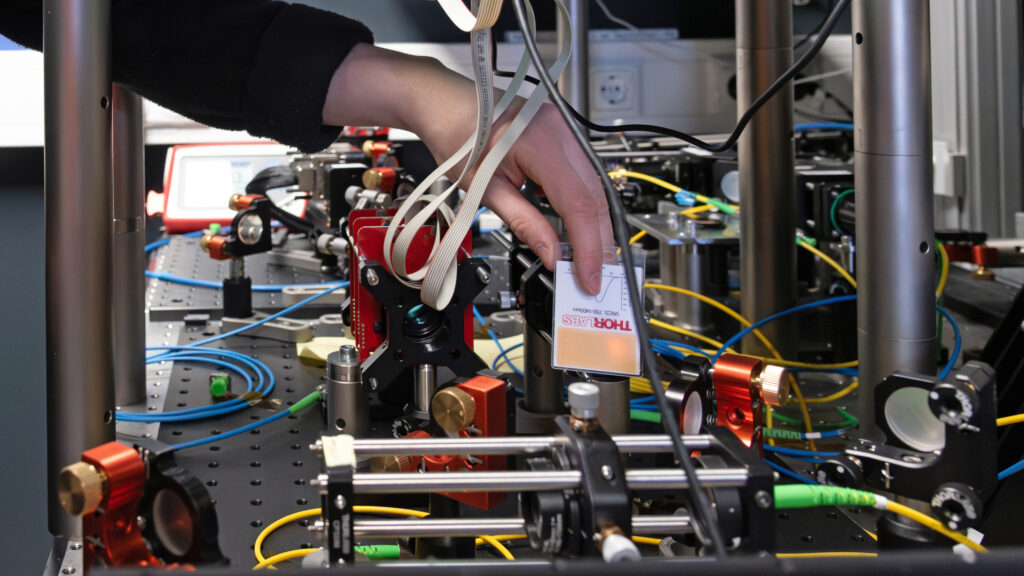
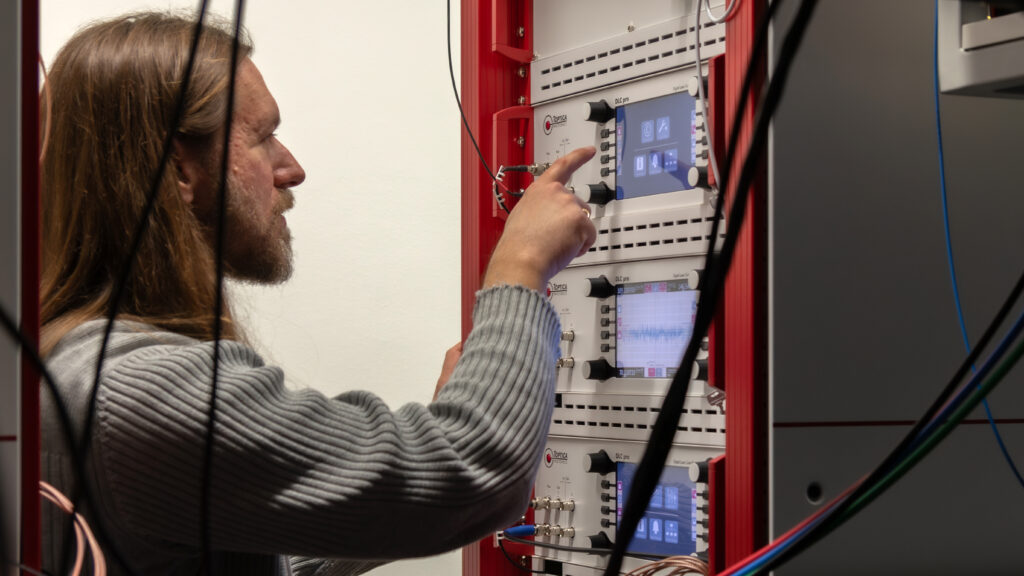

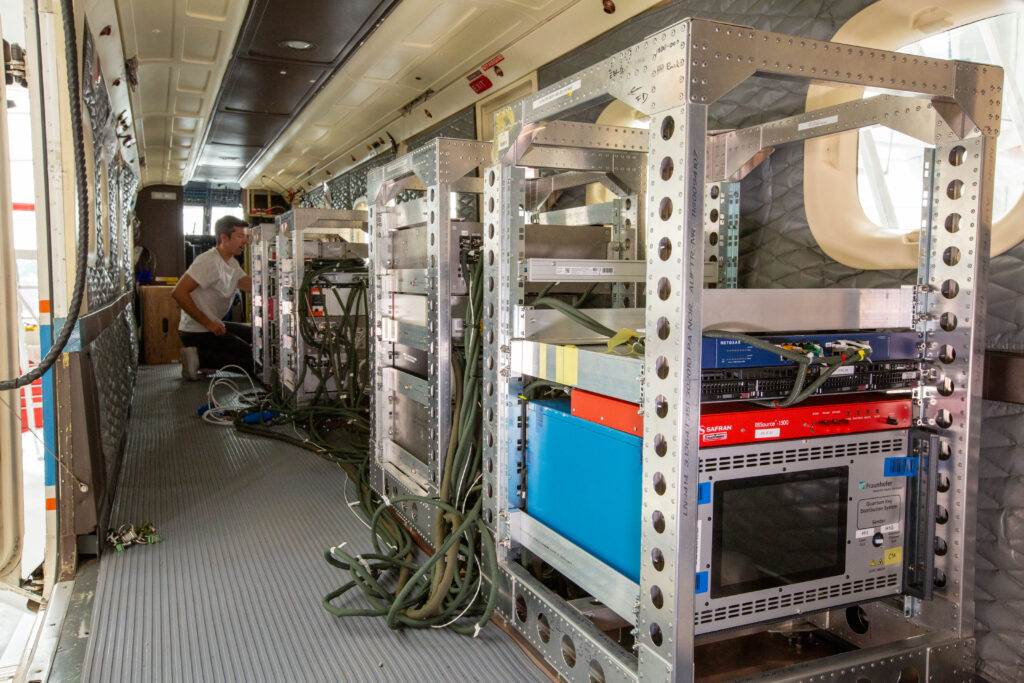

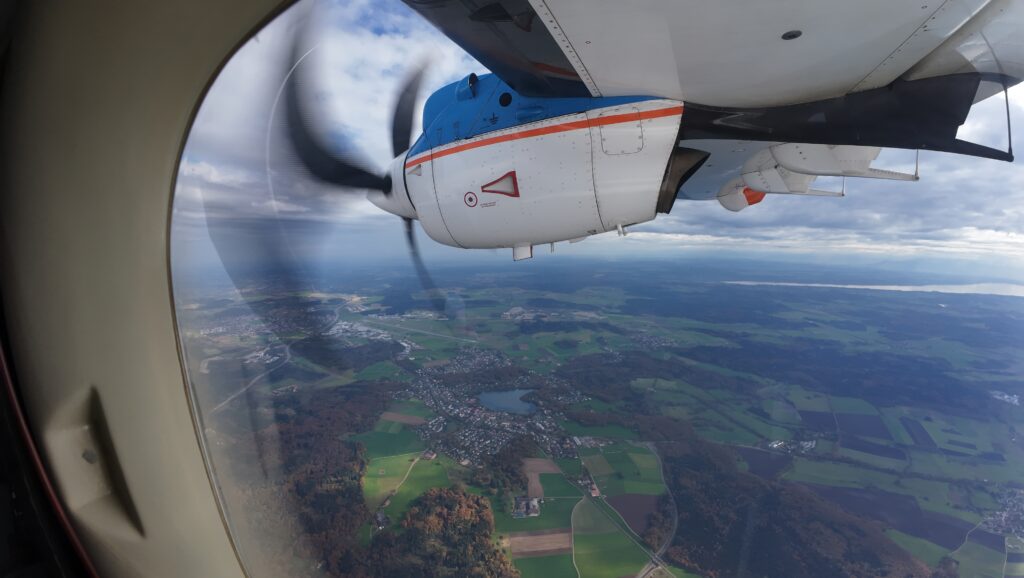
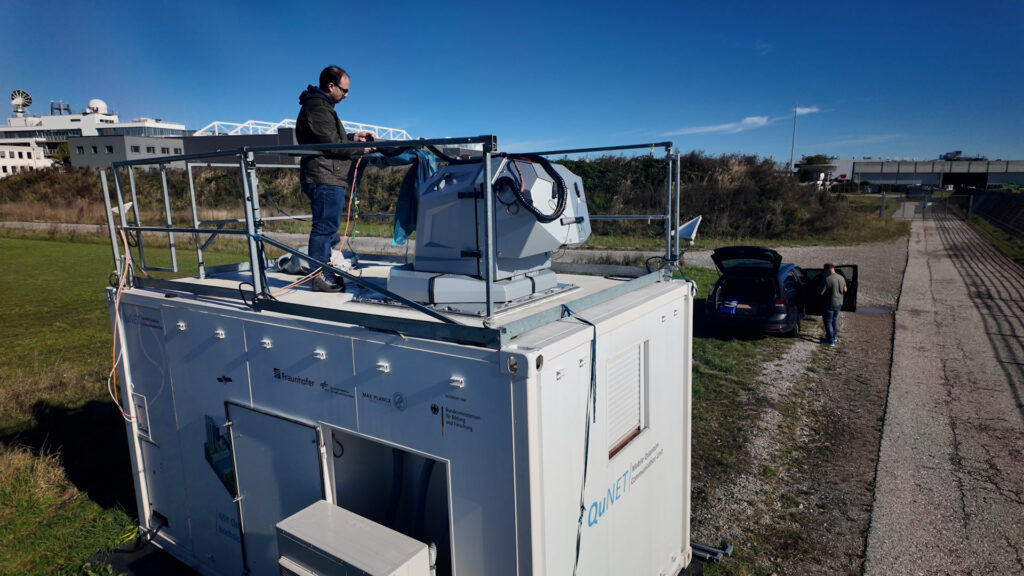

Prof. Dr. Christoph Marquardt
Head
Contact
- Email: christoph.marquardt@fau.de
- Phone: +49 9131 85 -71232
- URL: www.oqt.nat.fau.de/